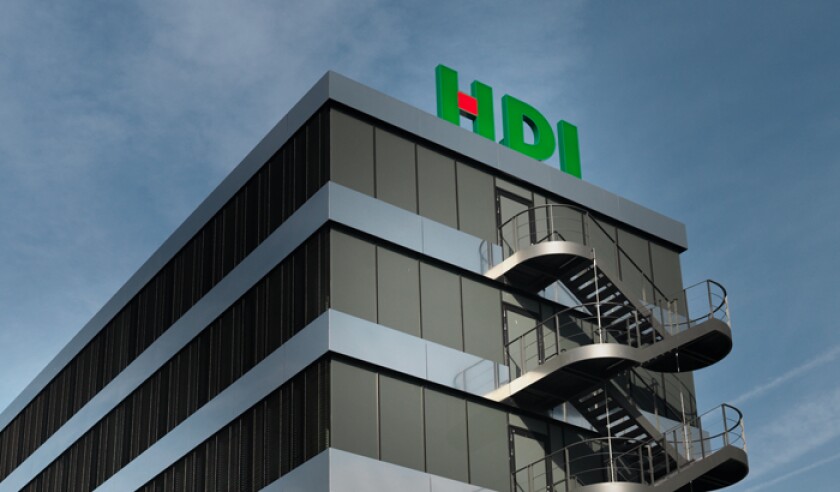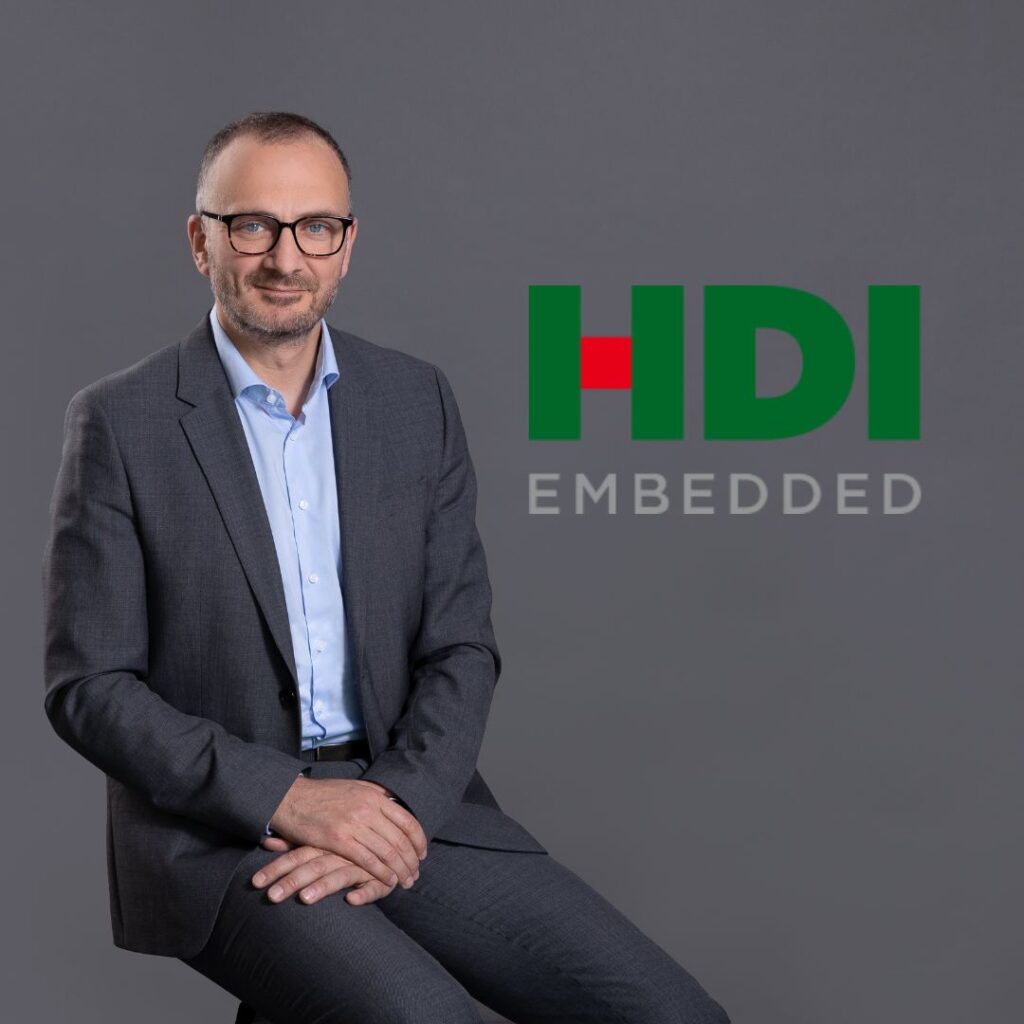Renowned for his expertise in driving impactful commercial outcomes, especially in the B2B domain, Marat Nevretdinov is a trailblazer in marketing, product advancement, and strategic initiatives within fiercely competitive and customer-centric industries. His remarkable journey spans successful ventures across Poland, the Czech Republic, Slovakia, and Hungary, solidifying his reputation for achieving tangible results.
Alongside with steering the ship at HDI Embedded, Marat holds pivotal roles, including COO of International Partnerships at Europa Ubezpieczenia, bringing a wealth of experience from various Managing Director and CEO positions within financial services organisations. Insurtech Insights caught up with him to find out more.
Can you give us a glimpse into your role and the journey that led you to where you are now?
Absolutely. I’ve been immersed in the insurance industry since 2009, a good chunk of time. For the past seven years until mid-2022, I held the role of CEO at two Polish insurance companies with HDI International as a majority shareholder. These companies, established 27 years ago, exclusively operated in the B2B model, or what we’d now call B2B2C. Essentially, we were into embedded insurance long before it got its trendy name, although back then, it was more of an offline game than online.We primarily collaborated with banks, leasing companies, telecoms, retailers, and eventually some e-commerce players.
The scope was a bit limited to specific industries, but it worked for us. Our operations were strictly within Poland. Last year, as the industry buzzed with questions about the future of embedded insurance, our shareholders gave us the green light. The headquarters believed in the potential of the Polish entities (Life and P&C) and deemed us the most suitable entity to lead its development.

Can you share how your involvement in a group-level initiative came about and what your role entails now?
About a year ago, the Group proposed a group-level initiative, and I found it intriguing. The prospect of something entirely new piqued my interest. If you were to ask me about my role today, it feels like being a startup founder and entrepreneur rolled into one. I’m essentially tasked with setting up everything from scratch – crafting the script, assembling the right team, investing in technology, fostering business partnerships, and curating a suite of products.
Here’s the interesting twist: on one hand, we’re operating as an incumbent, but on the other, we’re striving to extract the maximum from the Insurtech industry.In the past 12 months, we pursued two parallel strategic goals. Firstly, ensuring we build the right tech stack for HDI Embedded because, let’s be honest, without robust technology, all our visions are just fanciful tales.
Simultaneously, we recognised that having cutting-edge technology alone doesn’t guarantee commercial success. So, from day one, we delved into leveraging the existing business partnerships within the group. We have access to millions of customers through thousands of established business relations, ensuring that our technology aligns seamlessly with tangible solutions. It might sound a bit theoretical, but it’s the balance between innovation and practicality that makes it work.
You’ve been hailed as an advocate for insurtech, particularly in the realm of embedded solutions. What draws you to the space, and do you see incumbents as potential collaborators for the technologies HDI Embedded is developing?
Surprisingly, I found myself labelled as an insurtech advocate, and while I do admire them for their agility and disruptive DNA, I also recognise the immense value of cooperation between insurtechs and incumbents like us at HDI Embedded.
Insurtechs bring speed and innovation to the table, often disrupting established industry models. However, as an incumbent, HDI Group boasts over 120 years of existence, numerous business partnerships, and a wealth of know-how – some might even call it wisdom.
I believe in the power of smart collaboration between the two. It’s akin to the relationship between fathers and sons – if set up correctly, it creates the perfect blend of wisdom and energy for progress. While not all father-son relationships are ideal, it’s a separate discussion. I want to emphasise that it’s not about fathers being inherently wiser; it’s about recognising that both elements, the experience of incumbents and the innovation of insurtechs, are integral for long-term success. It’s a harmonious dance, not a hierarchy.

Embedded insurance is reshaping the insurance landscape, altering how people purchase policies and how the market functions. In your view, which regions are leading the way in this transformation, and why?
This question reminds me of a humorous anecdote about choosing between two notorious figures. In this case, I would say each region has its merits. The United States stands out for its high adoption of innovative solutions, particularly in the embedded space. Many globally recognised innovations originate there, and I believe this trend will persist.Moving on to Asia and Latin America, both regions are technologically-savvy with a demographic advantage – youthful populations more receptive to the rules of the digital economy. Additionally, both regions exhibit a higher level of under insurance, making it relatively easier to introduce insurance solutions to the population.
In Europe, the narrative of being slow to adopt innovations doesn’t hold true. While the regulatory process might be perceived as bureaucratic, it ensures a secure and methodical adoption. The UK market, although a part of Europe, demonstrates dynamic progress in the insurtech space, even during times of decreased investor support for insurtechs globally. Essentially, each region contributes something unique to the evolution of embedded insurance.
Implementing embedded solutions comes with its challenges, both technical and cultural. Can you elaborate on these hurdles and how significant they are?
It’s indeed a complex landscape. While technical challenges are apparent, I’d argue that the primary obstacle lies in achieving true embedding. Many examples in the market merely label themselves as embedded providers, but in reality, they lack the seamless integration necessary for a truly embedded experience.A genuine embedded solution seamlessly blends into the customer’s journey, whether it’s for finance, insurance, or any other need. The challenge is to make it so lightweight and integrated that it becomes an invisible part of the sales process.
The industry is still striving to reach this level, and it requires strong tech capabilities, straightforward terms and conditions, and a reasonably high level of customer awareness.Creating this seamless experience involves a unique spark, timing, and precise data utilisation. Being truly embedded means presenting the right offer at the right moment in the buying process, which is inherently challenging. One of my favourite aspects is data.
Without adequate data, pricing risk accurately becomes a hurdle. Overpricing can deter buyers, while underpricing may lead to product closure or painful repricing. It’s a delicate balance that requires a deep understanding of the market, and currently, the industry is navigating these challenges as it evolves towards true embedding.
How can these challenges be addressed, and what solutions can propel the market forward, particularly in overcoming issues related to pricing, customer awareness, and achieving true embedding?
Addressing these challenges involves a twofold strategy. Firstly, there’s a need for smart Research and Development (R&D), a term well-known in various industries, including insurance. Smart R&D goes beyond technology investment; it’s about fostering a culture with a high tolerance for initial mistakes. Creating this culture is crucial because without it, early mistakes could lead to project closures, hindering forward-thinking initiatives.Secondly, incumbents play a significant role in providing solutions.
They bring substantial value by adhering to universal B2B cooperation rules. These principles, established long before the digital era, emphasise long-term partnership approaches. Collaborating between insurance/insurtech, incumbents, and distributors who own end-customer relationships is essential. This collaboration aligns strategic goals, fostering a win-win situation that can overcome challenges like lack of scale, uncertainties related to risk profiles, and data deficiencies. Whether dealing with a retailer, e-commerce platform, tour operator, or mobility provider, sharing a common strategic goal is essential for success in the embedded insurance ecosystem.
In the embedded insurance space, which technologies are proving most useful, and what innovations are driving progress?
Unquestionably, the growth of embedded insurance can be attributed to the various tech advancements we’ve seen in recent years. The increase of digital platforms, the emergence of data-driven models and advanced analytics are fundamental in helping to create the products, services and experiences that customers desire.
Demographics play a pivotal role, especially with new generations embracing the digital and embedded world. As they enter the market, there’s a natural inclination towards accepting digital products. Second, leveraging data is paramount. The ongoing discussions with Google highlight the significance of data, making access to it crucial. Thirdly, cooperation between incumbents and the new economy is essential, blending decades of experience with fresh perspectives.
What about specific technologies and innovations that are proving helpful?
Indeed, technology is indispensable, but here’s an interesting story. Initially, dynamic pricing was considered a key driver for success. However, over the past year, a more cautious approach has emerged. While technology, including AI and machine learning, continues to be vital, the focus is on delivering the exact amount required at a given moment.
The emphasis is on creating technology that aligns with real customer and business partner needs. Sometimes, less technology or the right amount of technology is more effective in meeting current market demands.

How do you navigate the challenges and opportunities presented by technology in the embedded insurance space?
It’s a twofold challenge. Smart R&D is essential, emphasising the need for a culture that tolerates initial mistakes. This approach is crucial for forward-thinking. Additionally, a key factor is the universal B2B cooperation rules. Long-term partnerships between insurance or insurtech and incumbents, along with distributors, are vital. This collaboration is the key to overcoming challenges related to scale, risk profiles, data, and other uncertainties.
What is it that the customer really needs from their embedded services?
The key element is education. An aware and educated customer is essential, especially in the digital world where insurance is intangible. Insurance has always been a promise, and customers need to understand what they are buying. Trust is a crucial factor, and providing education builds that trust. For instance, in mobility, customers may not fully grasp the implications of damaging a high-value vehicle while riding a scooter. Education is vital, and offering insurance with clear explanations through apps can bridge this gap.
What solutions is HDI Embedded offering the market at the moment, and what new products can we expect?
Our focus areas leverage HDI Group’s unique positioning – both globally and at a local level. HDI’s 120 years of experience is a true asset as we evolve our embedded insurance offering. Moreover, at a local level and taking Poland as an example, over the last 27 years we have served upwards of 13 million customers, almost one third of the country’s population. So in first instance we concentrate on providing the right products to the financial services industry, travel, and in establishing partnerships with e-commerce players.
The reason here is really simple – we have a deep understanding of the needs of both our business partners and end-customers in these business verticals.Additionally, as the world evolves and new needs continue to emerge, we have been exploring opportunities in promising areas as telco and mobility. I am very proud of our teamwork in 2023 – our first year of launching our embedded insurance operations. In this period we have secured our two first deals with both “new mobility” provider as well as with one of the biggest telecoms operating in the EU.
This year, we will continue to deliver tailored insurance solutions to suit the customer needs in various segments. We’ll also continue to invest on technology development to strengthen our offering and provide seamless experiences for our customers.
What are your predictions for embedded solutions as we move forward in 2024?
I expect that in 2024 we’ll see greater adoption of embedded solutions by insurance providers as they prepare to leverage technology for more robust product offerings in response to heightened customer demands. However, many still lack the knowledge and expertise in-house, so it’s likely they’ll look to external insurtech providers to build strategic alliances.
The convergence of experience and trust traditional insurers have built with the tech capabilities of insurtechs, will without a doubt, bring more innovative solutions to the market. In addition, the proliferation of data, facilitated by the growth and capabilities of AI, will lead insurance providers to gain better customer insights.
Equipped with richer information, insurers will be able to refine pricing accuracy, tailoring premiums to granular risk profiles. This data-driven approach enables the creation of targeted insurance products, optimising coverage for individual needs. Open insurance practices (just like open banking), facilitated by data sharing among insurers, will help simplify the acquisition process, going even further in providing consumers with easily accessible and tailored insurance options.
What excites you the most about the changes in the insurance industry?
Well, when I made the transition from banking to insurance, I encountered a prevailing myth that the insurance world was reserved for older professionals. The notion was that the ideal insurance customer only showed up at an agent’s office once a year, bought a policy, and then disappeared for the next 12 months. It made me question why that stereotype existed.
Over the past 15 years, the industry has proven that this perception is changing. There have been successful endeavours to challenge the belief that insurance is an exclusive club for seasoned individuals. For instance, my 16 and 15-year-old kids, when they occasionally ask about my job, grasp the concept. They understand that the future of insurance is evolving, and it doesn’t have to adhere to the old norms.
The exciting part is that the landscape is shifting. It’s not confined to a particular age group. My kids see the potential for change, recognising that the insurance industry can operate with the same modern dynamics as Netflix, Spotify, Amazon, and others. It’s a departure from the traditional image, and that’s what gets me really excited. The logic is there, and while it might take time, it’s evident that insurance can be just as contemporary and dynamic as any other industry.
Interview by Joanna England

Joanna England is an award-winning journalist and the Editor-in-Chief for Insurtech Insights. She has worked for 25 years in both the consumer and business space, and also spent 15 years in the Middle East, on national newspapers as well as leading events and lifestyle publications. Prior to Insurtech Insights, Joanna was the Editor-in-Chief for Fintech Magazine and Insurtech Digital. She was also listed by MPVR as one of the Top 30 journalist in Fintech and Insurtech in 2023.









